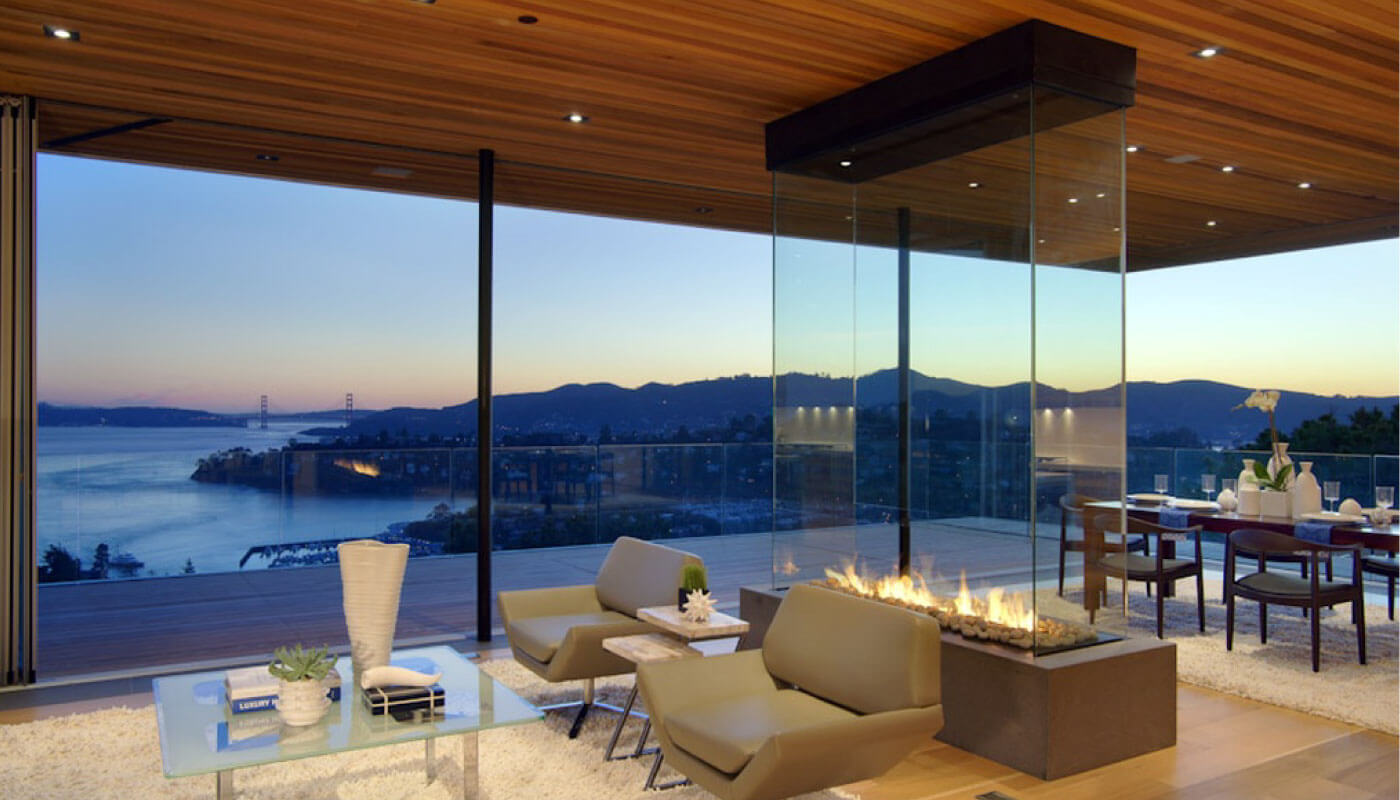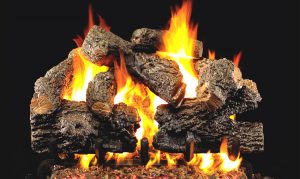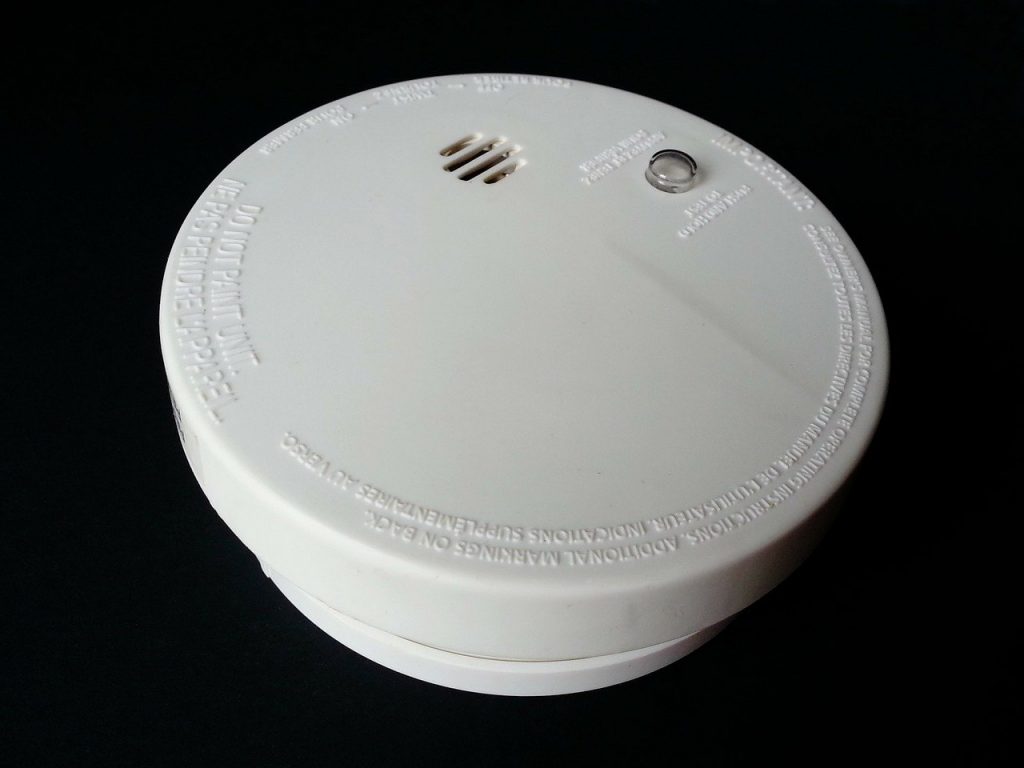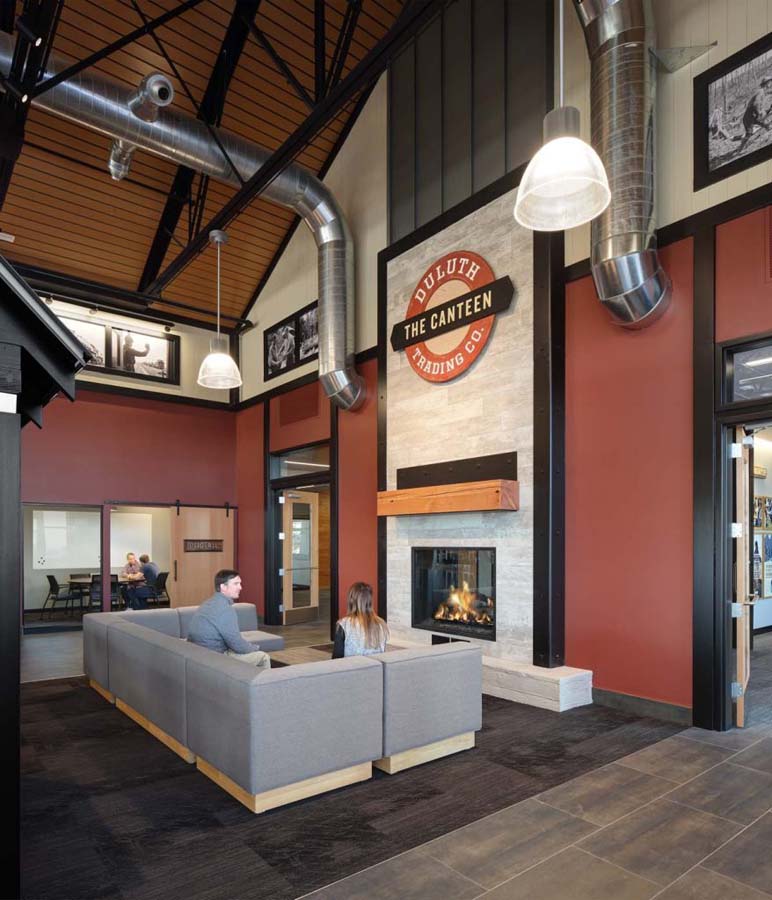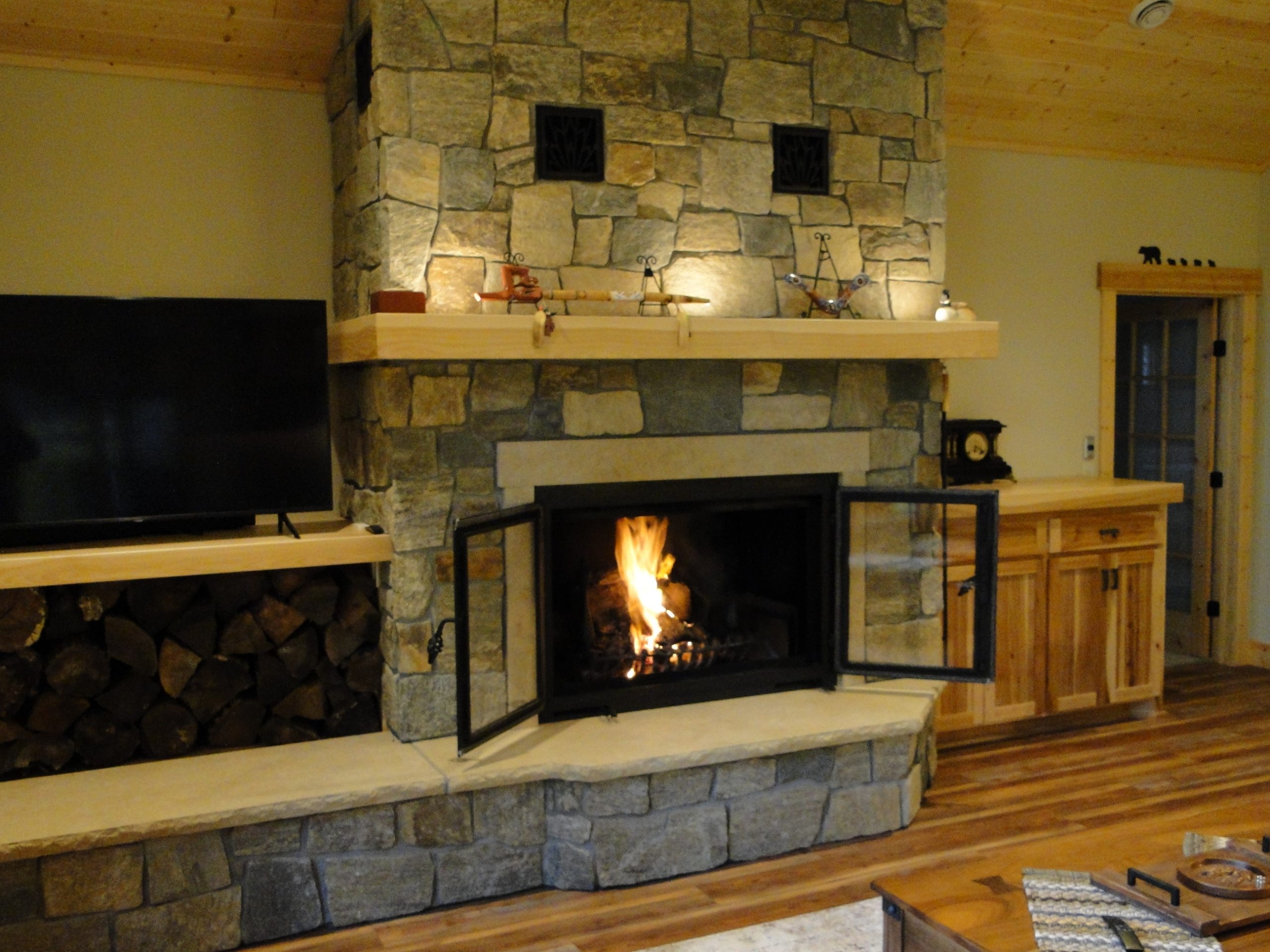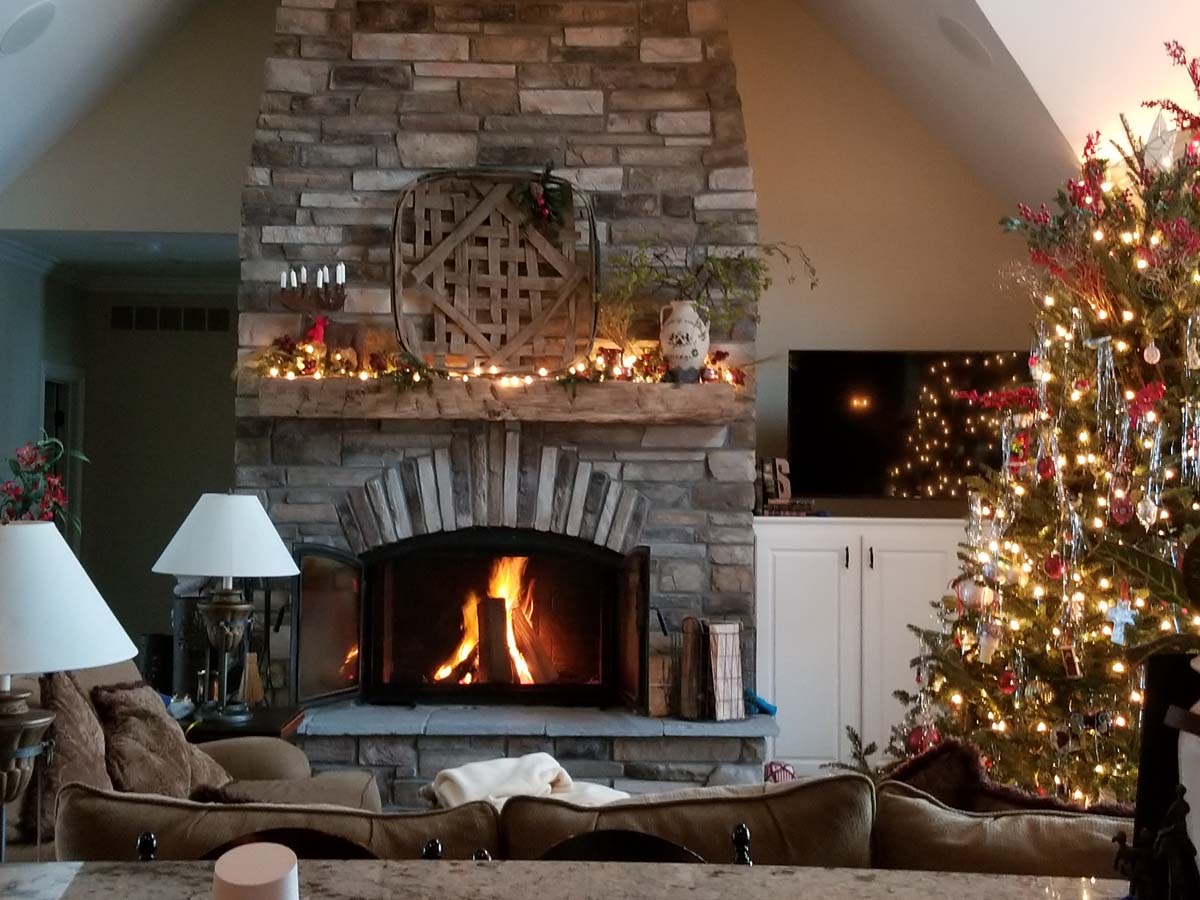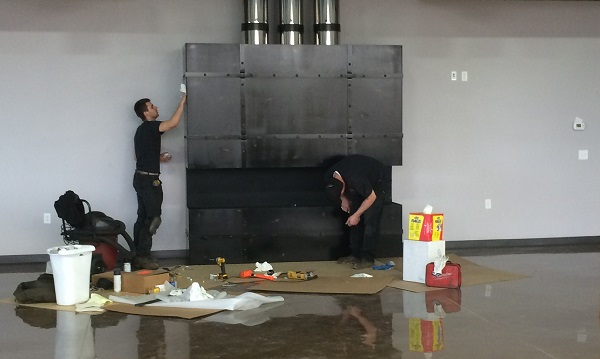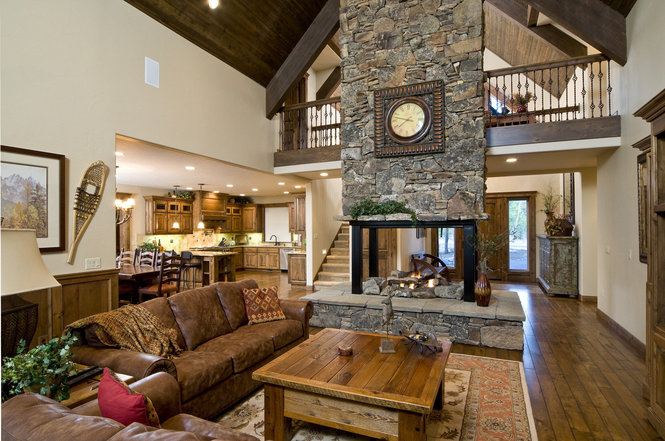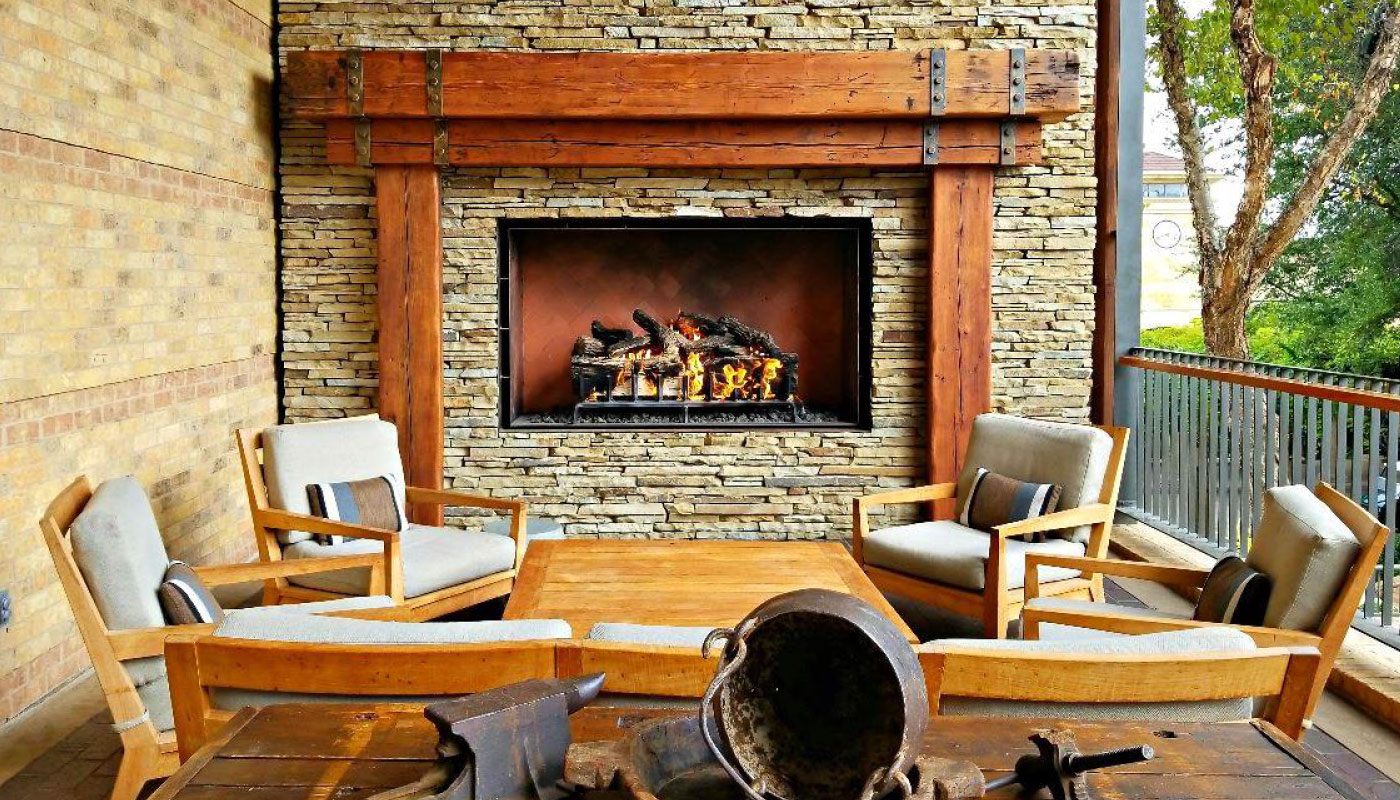
Curling up in front of a warm, crackling fireplace is the perfect way to spend a chilly night. But, in order to enjoy the peace of mind of knowing you have a safe home fireplace, you should always make sure to practice proper fireplace safety.
Maybe you have a simple fireplace question, like “can gas fireplaces be dangerous?”, or “why do gas fireplaces have glass?”. Or, maybe you want to learn how to know if your gas fireplace is safe, and how to inspect your gas fireplace or wood fireplace.
We’ve detailed the most important fireplace dangers and how to safeguard against them, plus other fireplace safety tips for your space in this detailed guide.
Fireplace Hazards to Look Out For
As with anything involving fire and fuel (gas or wood), there are fireplace hazards and safety precautions to be aware of. As you learn to maintain your fireplace, preventing these hazards is the first step. Whether the fireplace is in your home or commercial space, indoors or outdoors, gas or wood, always be aware of these dangers and do your best to avoid them.
- Flammable items (ex. rugs, etc.) in front of the fireplace
- Dirty exterior
- Gas leaks that lead to carbon monoxide issues
Charred Royal English Gas Logset
- Forgetting to have your fireplace annual inspection and cleaning by a professional
- Using chemicals or wet, rotten, or diseased wood to start a fire
Are Gas Logs Dangerous?
Just like any other gas or wood-burning product, gas logs produce carbon monoxide. With proper venting, use, and maintenance practices, gas log sets are not dangerous.
Fireplaces and Carbon Monoxide Poisoning
To understand gas fire safety regulations and chimney safety tips, it’s easiest to first understand what generates carbon monoxide, how it turns into a problem and preventative steps to take.
Carbon monoxide comes from fireplaces – both wood and gas – as well as gas hot water heaters, gas and oil furnaces, and gas stoves. The consequences of ignoring carbon monoxide fireplace safety can be deadly. Carbon monoxide tends to be odorless and it tricks our bodies into thinking it is oxygen. In fact, our bodies will actually choose carbon monoxide over oxygen when both are present in the air around us. Low levels of poisoning can cause flu-like symptoms, which often lead people to feel like they’ve just got a cold. If poisoning worsens, it can lead to death.
With chimneys and fireplaces, the most common way that carbon monoxide problems occur is improper fume exhaustion. The best way to avoid this problem is with regular professional fireplace and chimney inspection.
The most basic and essential tip when it comes to protecting yourself and your loved ones from carbon monoxide poisoning is simple; make sure you have a working carbon monoxide detector installed in addition to your smoke detector.
Fireplace Safety Tips
Whether you have a wood-burning or gas fireplace, there are many safety tips that overlap.
- Install smoke detectors: In addition to carbon monoxide detectors, ensuring your regular smoke detectors are properly installed and functioning is also crucial. Having a properly maintained fire extinguisher at the ready is another smart idea.
- Get your chimney cleaned: For optimal efficiency, it’s recommended that you get your chimney cleaned twice a year.
- Get a chimney cap installed: A chimney cap will keep things like rain, snow, animals, etc. from getting into your chimney while reducing downdrafts. Caps have side vents so there is still adequate ventilation.
- Fireplace safety screen: The glass panels in front of a gas fireplace can heat to over 350 degrees. Wood-burning fires with an open front can spew ash and hot embers. A fire safety screen can help reduce danger in both scenarios.
Safest Fireplace Screens
The type of fireplace safety screen you have makes a difference, especially if you have a wood-burning or open gas fireplace.
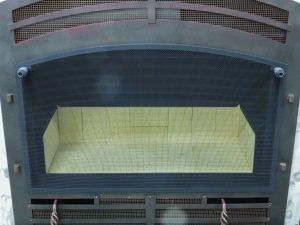
Acucraft Wood Fireplace Firescreen
- A hanging wire mesh screen will keep embers from flying out of the fireplace. Acucraft gas fireplaces have optional removable wire mesh screens.
- For extra safety right away, fireplaces can come with a built-in fire screen that can’t be knocked over or accidentally moved. To meet UL standards, Hearthroom wood fireplaces from Acucraft have a built-in firescreen. This screen can be easily removed when hazards are cleared.
- Custom screens can be designed to match your vision, whether that means a functional modern sliding screen or any other unique decorative style.
- A free-standing screen can be easily purchased and can keep a shifting log from rolling out. This is a great temporary safety measure for casual use since it doesn’t attach, but may not be as strong or reliable as other options when there are children and pets around.
Gas Fireplace Safety Tips
We’ve covered general safety tips that apply to both wood and gas fireplaces, but now it’s time to dive into how they differ and the unique safety recommendations for each. People often wonder, “Are gas fireplaces safe?”. The answer is yes, as long as they’re properly maintained.
Since gas fireplaces have more automatic features than wood-burning fireplaces it’s much easier to forget about the safety checks for gas fireplaces. Here are the essentials:
- Know how to shut the gas off: Whether you need to shut it off for an emergency or just for the seasons you don’t use the fireplace, knowing how to turn off the gas is an important skill.
- Keep the controls out of reach of children: Keeping children away from fires and fire-starting materials will prevent accidents that can hurt them, as well as others. Install wall switches higher up and out of reach.
- If it doesn’t light right away, wait 5 minutes: Give the fireplace time to air out between attempts to light it to prevent gas build-up.
- Use a fire screen for open gas fireplace safety: Some people like the open gas fireplace for the way it looks. However, in a public space or if there are children around, it’s smart to put up a fire screen.
- Keep a safe distance from a gas fireplace: Children, adults, and animals are all at risk of burning themselves on a gas fireplace, especially if there is no glass or if the glass on the front is just a single pane. Consider using a baby gate for additional security. Or, avoid the risk altogether with Acucraft’s dual-pane glass cooling system with safe-to-touch glass.
Do you have more questions after reading these basic gas fireplace safety tips? Check out our blog about common gas fireplace questions and see our FAQs page for more answers.
Wood Fireplace Safety Tips
A traditional wood-burning fireplace has many more moving parts that you, as an owner, must be aware of as compared to a gas fireplace. Keeping a wood fireplace running safely involves a lot of attention and manual care, especially when it comes to fireplace child safety. But, these tips will help you keep your family and home warm and safe with your wood fireplace.
- Know your fireplace: A safe fireplace owner understands the parts and their functions. Contact our professionals for any clarification and assistance that you may need.
- Know and use your fireplace tools: Knowing your tools and how to use them as you maintain a fire is important. If you don’t, it’s easy to burn yourself or accidentally start a fire outside of the fireplace.
- Clean the firebox: You must scoop the ash out of the firebox with some regularity over the course of your burn season. Maintain 2-3 inches of space below the grate.
- Properly dispose of coals and ash: If you dispose of these inappropriately, they could end up starting a fire wherever you dump them. Wait until the coals are fully cooled before disposing of them.
- Store firestarters, kindling, and logs away from the fireplace: If these are too close to the fire when an ember escapes, a fire could easily start and quickly get out of hand in your living room.
Have more questions? Take a look at our blog on wood-burning fireplace tips and fireplace FAQs to answer more of your wood fireplace questions.
Winter Fireplace Safety
Winter tends to be the time of year that we use our fireplaces most often. For this reason, there are a couple of safety tips to keep in mind particularly right before winter sets in:
- Get a fall inspection and chimney sweep: As winter is when fireplaces are used most, it’s the season when your fireplace gets dirtiest and things begin to build up. If you haven’t had an inspection since last winter, make sure you do this soon.
- Run your ceiling fans clockwise at low speeds: This allows for optimal circulation of the warm air throughout your home and lets you get the most out of your firewood.
How to Know If Your Fireplace Is Safe: Routine Inspections
Learning about fireplace safety can sometimes cause concern and leave you wondering, “But… is my fireplace safe?”. There are several ways to determine the safety of your fireplace.
If cost and effort related to maintaining a fireplace are a concern, you should know that the best way to reduce costs and effort is to regularly hire someone to clean and inspect your fireplace. Here are the best ways to make sure your fireplace is safe and maintain that safety.
Routine Cleaning and Care
Routine cleaning and care are a great way to ensure the safety of your fireplace. A build-up of debris creates a greater risk for fire. If cost is a concern, keep in mind that the price of cleaning a well-maintained fireplace runs an average of $85-$100, but cleaning a fireplace with years of build-up could cost as much as $800. We recommend hiring a professional chimney sweep to inspect and clean your fireplace and flue annually.
Schedule Safety Inspections
Safety inspections should be done once a year by a professional chimney sweep. Inspections come in three different levels. Which is right for you depends on your situation:
- Level 1: Basic inspection for the continued use of your fireplace as it is in your home.
- Level 2: This is required when any changes are being made to the system, if the property is being sold, or after an external event caused damage to the chimney. Chimney fires, building fires, or other large events are cause for this type of inspection.
- Level 3: If a level one or two inspection points to a hidden hazard, a level three inspection is required. This level addresses the actual construction and condition of the chimney. Removal or destruction of some portions may be required.
Acucraft does not perform fireplace inspections but can offer on-site calibrations and service maintenance contracts for gas fireplaces. Learn more about Acucraft’s on-site services and maintenance agreements or reach out to a fireplace advisor to learn more.
Fireplace Maintenance Services
Fireplace maintenance services are for issues like a pilot light that’s out, a broken remote, malfunctioning fan, or issues with the flue/chimney. Never let any problem go unaddressed; as you know, playing with fire is dangerous, and it’s always best to err on the side of caution.
Acucraft’s Fireplace Testing and Certification
At Acucraft, every gas fireplace we manufacture is inspected and tested in our internal lab that is routinely audited by LabTest Certification Inc. several times each year. LabTest provides product testing and certification to national and international standards in electrical, hazardous location, EMC, gas, plumbing, energy efficiency, building materials, and more.
Our Hearthroom Series is UL certified for unbiased assurance of quality and safety. This series of wood-burning fireplaces were tested at LabTest’s own Las Vegas site. Learn more about Acucraft’s UL listed wood fireplaces or contact a fireplace advisor for more information.
Choosing a manufacturer who is willing to have their products tested and scrutinized by a third party is incredibly important for the safety and integrity of the product itself, and speaks to the integrity of the company as well.
Explore Acucraft’s Certified-Safe Custom Fireplaces
Everyone loves a cozy fire to nestle up beside, especially in the colder months. With these fire safety and maintenance tips, you should be able to enjoy your fireplace and relax knowing that your fireplace is safe and well-maintained.
At Acucraft, safe and beautiful custom fireplaces are our specialty.
Our fireplace advisors are ready to make your dream fireplace a reality. Browse our custom gas and wood fireplace photo galleries for inspiration or contact us to get started.
